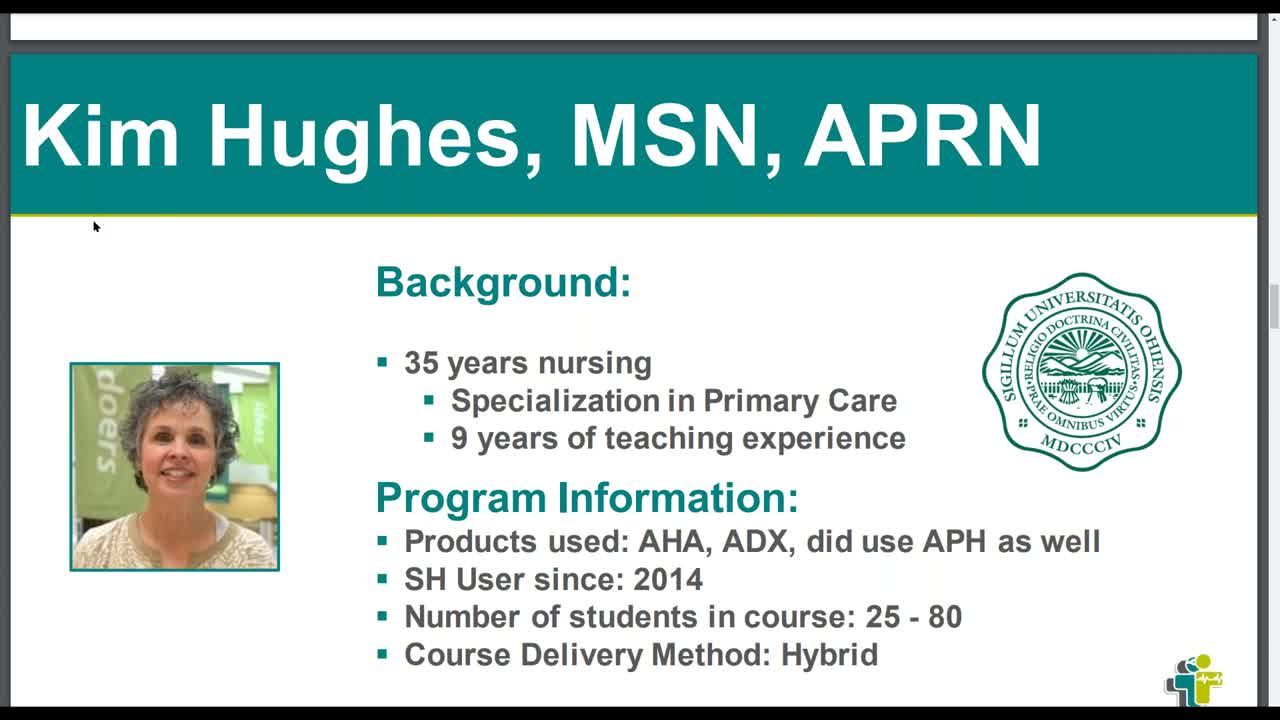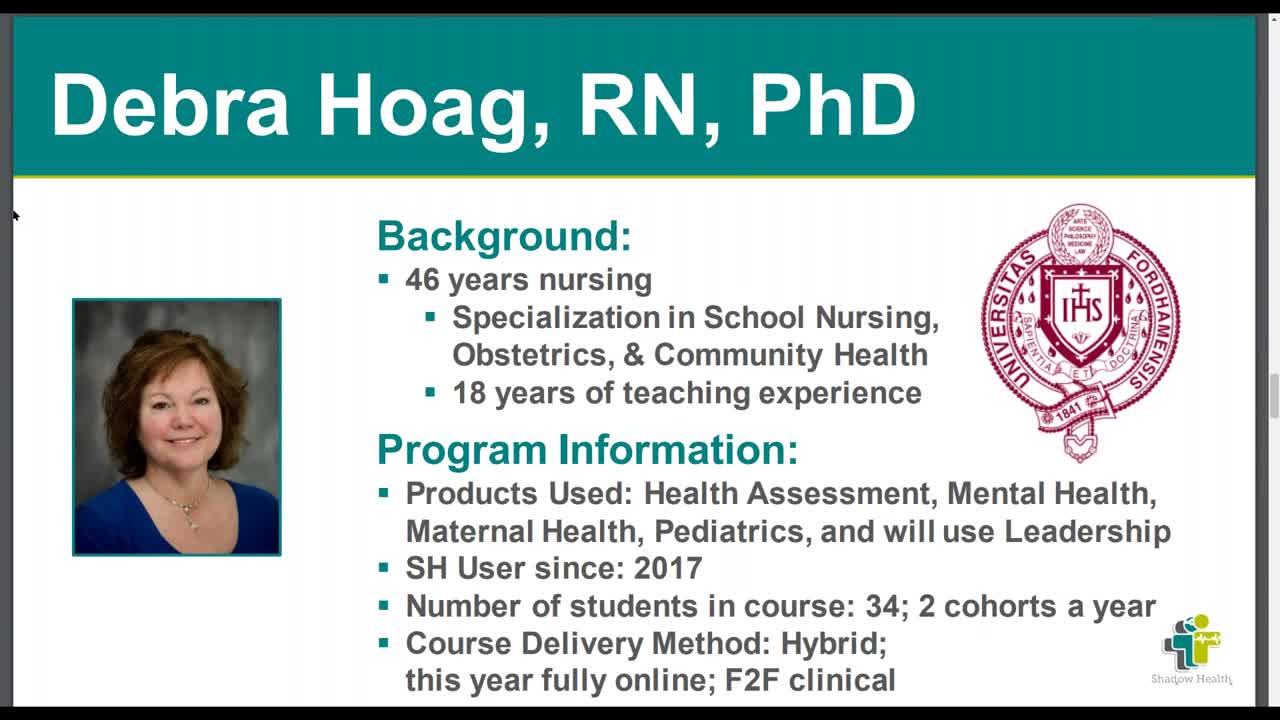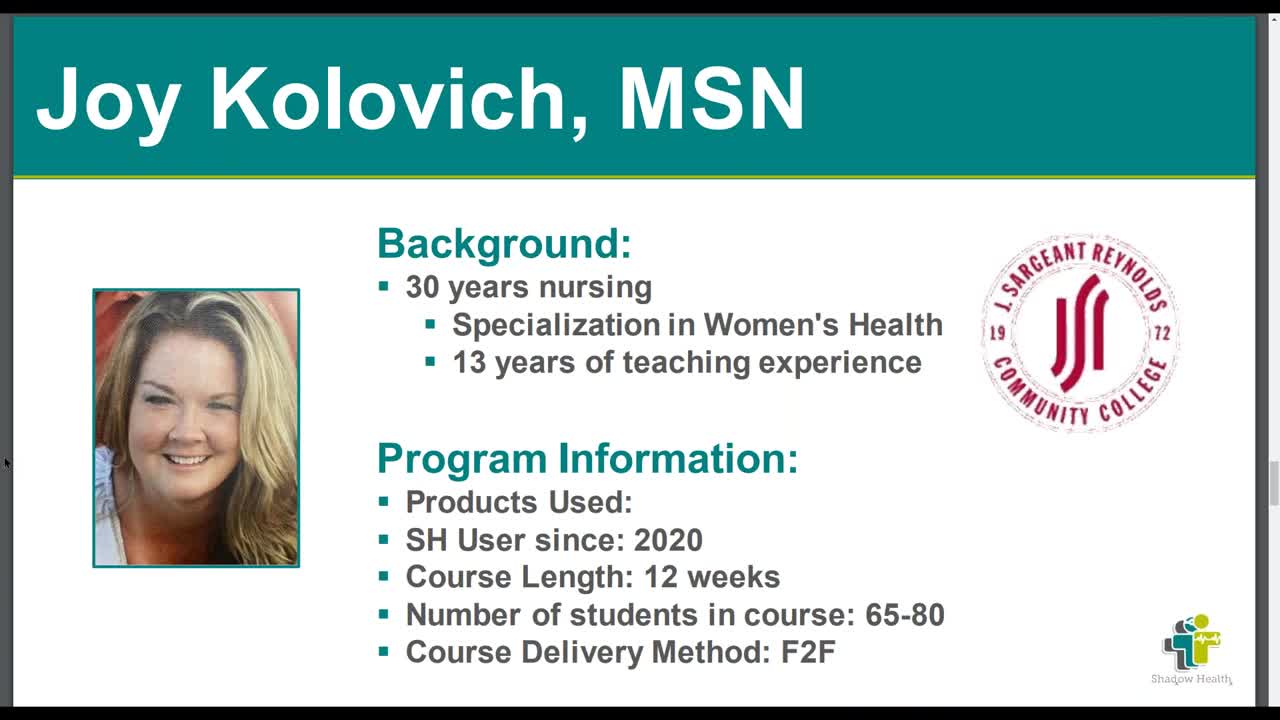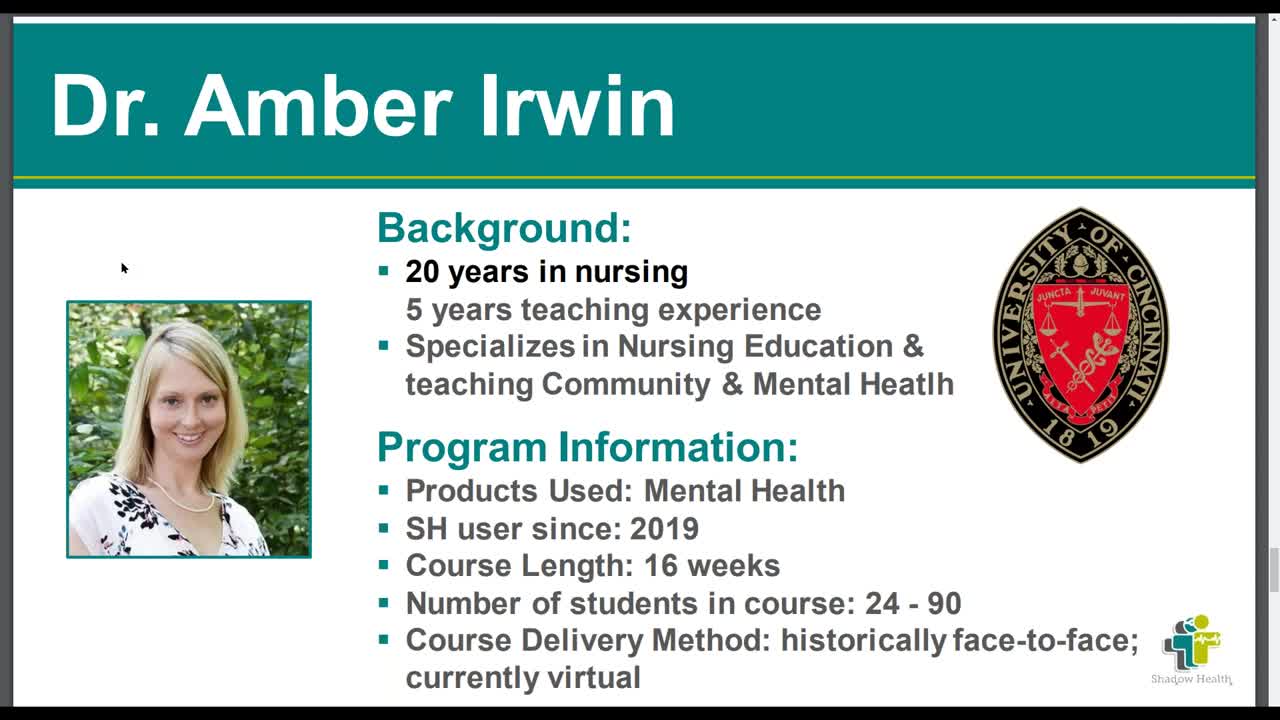
The COVID-19 pandemic impacted nursing education in many ways, especially when it came to applying clinical skills. With many clinical sites unable to provide students full access to training at their facilities, nursing programs had to find new ways for students to have hands-on critical thinking opportunities. One solution to address this learning gap is screen-based simulations like Shadow Health Digital Clinical Experiences™ that gave students the ability to practice their skills with Digital Standardized Patients™.
For some schools, Shadow Health already provided students with the ability to practice care for virtual patients in a safe, controlled environment, helping them develop the skills they would use in the clinical environment. For those who had to quickly transition online, Shadow Health provided them with an alternative that enabled students to continue their learning.
In the webinar “Shadow Health: Use Cases for the Digital Clinical Experience”, faculty from schools across the country shared their experience and advice on different ways to use Shadow Health DCEs in their nursing programs. These use cases include programs that used Shadow Health both before and after their programs moved online due to the pandemic. Learn what each faculty had to say below, and watch the full webinar here.
Kim Hughes, MSN, APRN
MSN-FNP Track Professor at Ohio University School of Nursing
Although Hughes’s program has been using Shadow Health since 2014, it became even more important as they used it for clinical replacement and virtual intensive when they moved fully online. Before the pandemic, they did not use Shadow Health as a clinical replacement, but as a supplemental tool to increase students’ experience to practice subjective and objective physical assessment skills and history gathering. She recommends faculty explore the different features of Shadow Health and pace student use as they acclimate to all the benefits, like the Student Performance Index.

Dr. Debra Hoag, RN, PhD
LPN-ASN and RN-BSN Program Professor at Fairmont State University
As an instructor for an LPN to RN program with 18 years of teaching experience, Hoag recognizes that Fairmont State has an advanced program with learners who have some background in clinical experience already. Her program has used Shadow Health to replace clinical time as well as a tool for grading and theory. In addition to using the Student Results Book to measure student progress, faculty look at the communication transcripts collected during the simulation and advise students on conversations as needed.

Joy Kolovich, MSN
Nursing Programs Coordinator at J. Sargeant Reynolds Community College
As her program struggled to find a way to provide students an online clinical experience in March 2020, Kolovich felt like Shadow Health checked all of the boxes. Joy felt strongly this was the way to go for a virtual experience to replace clinical hours. She worked closely with students to make sure they were on the right track, pushing them to do their best on the first try but also giving them the option of flexible turn-in.

Dr. Amber Irwin, DNP, MSN, BSN, RN, LSN
Assistant Professor of Clinical at University of Cincinnati
Since 2019, Irwin’s program used Shadow health to standardize simulation opportunities. Irwin found that in clinical experiences, students were often in groups and not fully taking on the nursing role. With Shadow Health, students had the opportunity to be the nurse the entire time. Once COVID-19 hit, Irwin’s program developed a conversion score to use Shadow Health for clinical. Not only did Shadow Health help students achieve better scores in the program, but it helped increase their communication skills while interacting with virtual patients.
